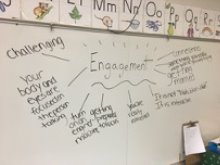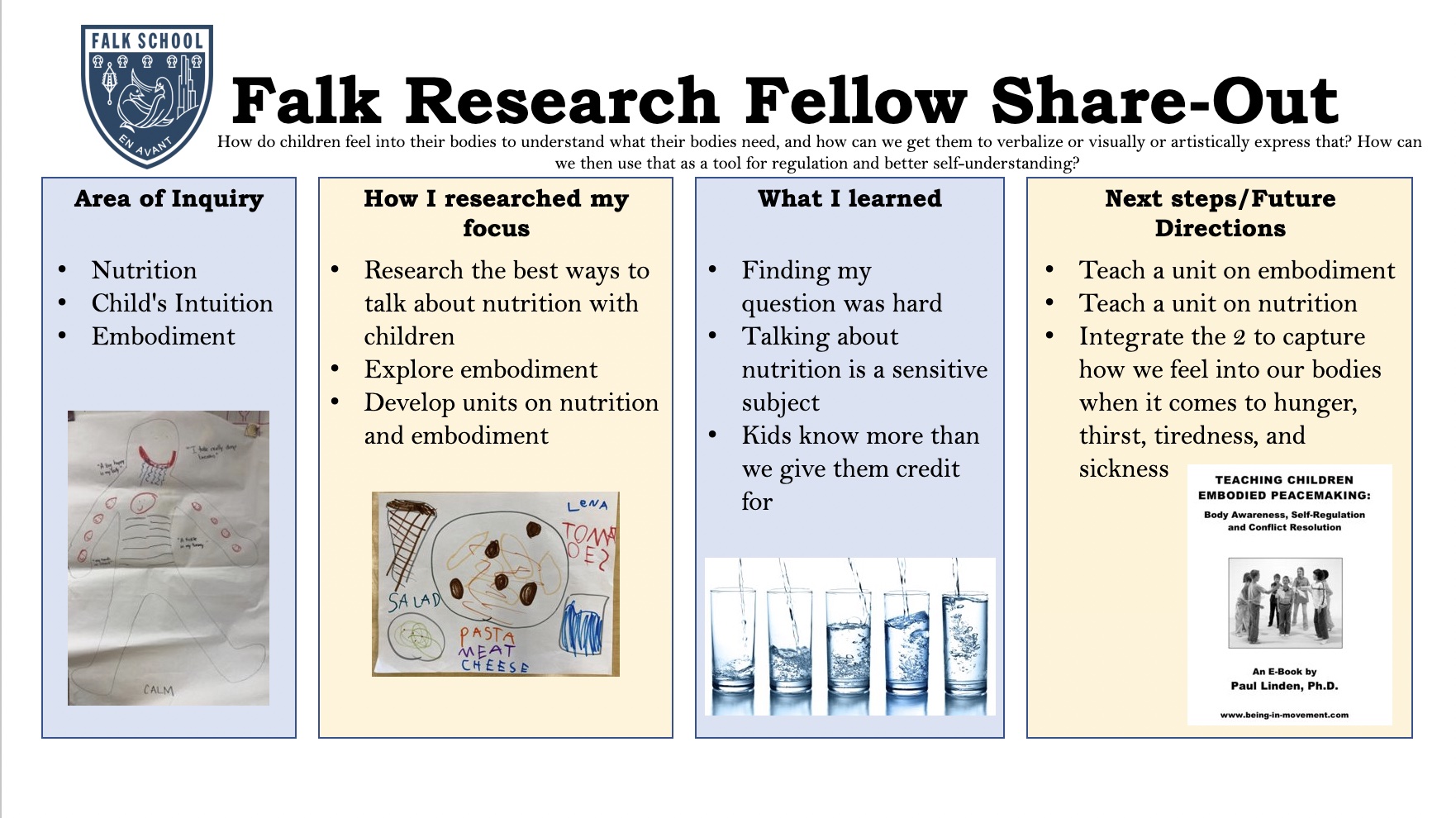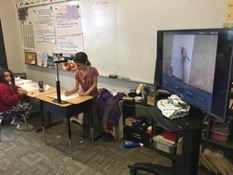Discover our
Home for Learning
- Contact
- 412-624-8020
- [email protected]


At Falk Lab School’s final faculty meeting of the 2022-23 school year, a group of six research fellows shared their inquiries in poster presentations that facilitated discussion about their processes, what they learned along the way, and directions for future exploration.
Middle School Spanish teacher Valerie Rossi wanted to help students improve their writing skills and build their confidence with writing in Spanish.
To pursue that goal, Rossi attended several conferences and read scholarly journals in the field of language education. She learned that students need extensive writing practice; they need quality, authentic texts as models; and they need to work with their teachers and peers to “co-construct” an example text before they set out to write independently.
For her next steps, Rossi plans to continue to explore the concept of genre-based writing. She previously completed a research fellowship to explore the question of how to support Spanish students in summative assessments.
*
Technology coordinator Josh Keebler’s research question was how to adapt technology integration at Falk. Due to a lack of time, he wanted to retool and streamline his process for responding to tech help requests from faculty and staff.
“With the help of supervisors,” Keebler says, “we methodically identified aspects of my job that could be reorganized and developed while troubleshooting roadblocks.” This allowed him time to conduct additional research into what was underlying the number of help tickets he received, and how to streamline the process.
By tweaking how he addressed help tickets and preemptively supporting teachers, Keebler observed a 17% decrease in help tickets.
*

First-and-second-grade teacher Kevin Goodwin’s research project asked, “What happens when a kid is given the chance to be a teacher?”
He and his second-graders discussed what it means to be a teacher. The students interviewed their student teacher, Preena Patel. They made lesson plans and shared them with Patel for her feedback before refining the lessons further, then reflected on their observations in one-on-one interviews with Goodwin.

“You really start to assess yourself as a teacher as you watch your own students teach,” says Goodwin. “It takes a lot of self-control to not help out too much with the lessons and allow the kids to make mistakes that they can genuinely learn from. I learned the value of letting kids reflect on their work and giving them a chance to try things over again. I learned that kids really enjoy teaching each other, although they understand that it can be incredibly difficult and incredibly fun at the same time.”
*
Middle School Director Dr. Joanna Newlin’s research project explored what Middle School activities increase students’ feelings of connectedness and belonging to the school, and which increased feelings of disconnection.
She conducted background research into adolescent belonging and gave a survey to all Middle School students asking them to agree or disagree with statements like “I feel like a part of my school” and “There is at least one teacher or adult I can talk to in my school if I have a problem.”
Dr. Newlin discovered that while a majority of Falk Middle School students felt a sense of connection to Falk, there is room for improvement, with some students reporting feeling a lack of connection with at least one adult and feeling different or unaccepted as they are. She regards this project as the first step in an ongoing exploration of engagement at Falk Middle School and plans to create an inventory of Middle School activities and events and collect data through follow-up surveys and/or focus groups to determine which activities increase or decrease students’ sense of belonging.
*
Kindergarten teacher Colleen Lataille set out to investigate the question of how children sense what their bodies need, and how teachers might help them to express those needs.
She researched the best ways to talk about nutrition with children and developed units on nutrition and embodiment, exploring how children talk about feeling hungry or full.
She learned that children know more than we give them credit for, and cited one child’s analogy comparing hunger and satiety to a glass of water: the glass can be full without overflowing. Lataille plans to continue teaching units on nutrition and embodiment, integrating the two to explore with children how we feel into our bodies when it comes to hunger and thirst as well as tiredness and sickness.
*
First-and-second-grade teacher Katie Spence asked, “How can I make social and emotional learning more visible and explicit in my classroom?”
To pursue the answer to that question, she used techniques like concept mapping, puppet shows, and book talks, with research coordinator Dr. Katrina Bartow Jacobs taking notes. Ms. Spence also noted how kids referred to social-emotional learning lessons in their daily interactions and written work.
She is planning to create and implement a more extensive social-emotional learning unit to continue exploring this question in the future.
